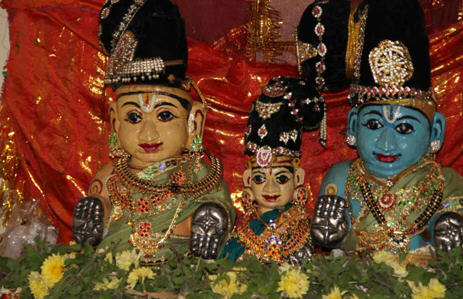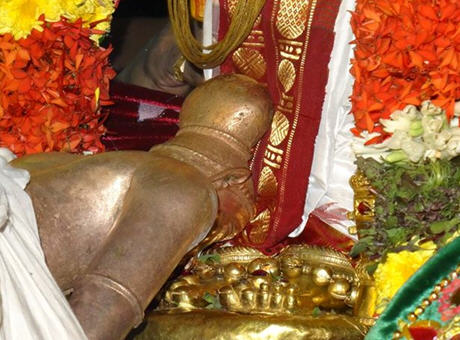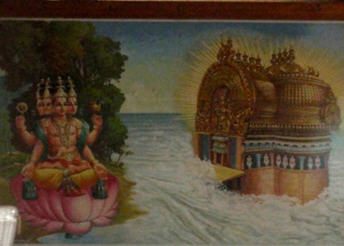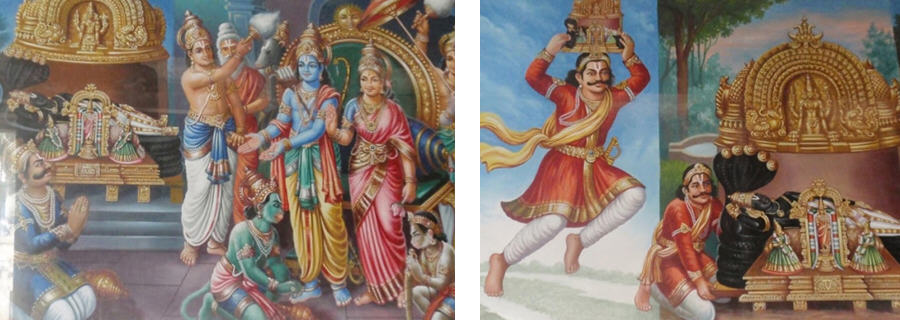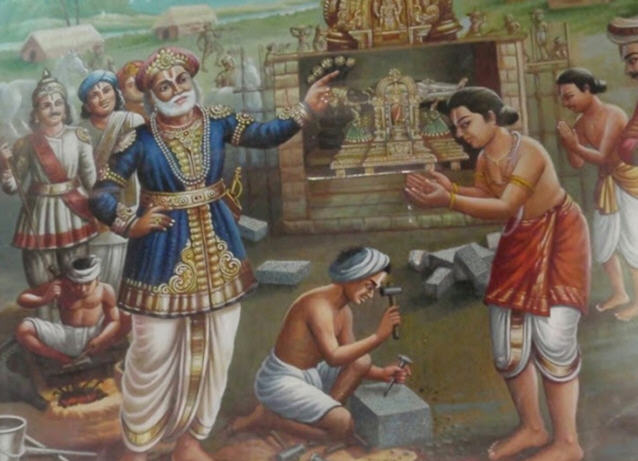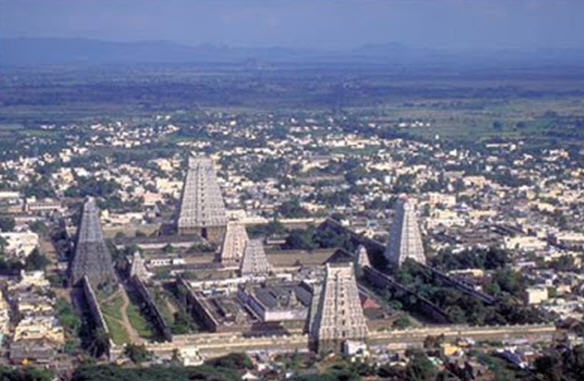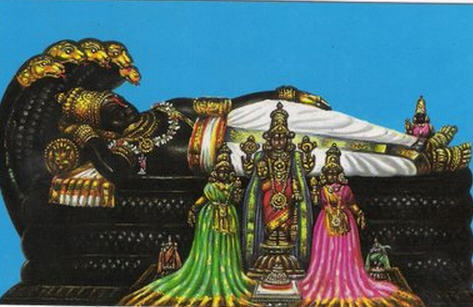Sri Ramanujacharya (A.D. 1017–1137) spent 80 of his 120 years at Sri Rangam. For twenty years he was the chief priest of the temple. Ramanuja is the main acarya, or spiritual teacher, in the line of teachers and disciples knows as the Sri Sampradaya. His presentation of Krsna consciousness is known as visistadvaita, “qualified nondualism.” A staunch proponent of the philosophy of personalism, he taught that although the Supreme Lord and the individual souls are qualitatively one, there is still a difference between them, for the Lord is infinite and the living entities are infinitesimal. Ramanuja traveled extensively throughout India, teaching personalism and debating proponents of monistic philosophy. His commentary on the Vedanta-sutra is known as Sri-bhasya. Ramanuja founded seventy-four centers of Sri Vaisnavaism and initiated seven hundred sannyasis (renunciants), twelve thousand brahmacaris (celibate students), thousands of householders (including kings and wealthy landowners), and three hundred ketti-ammanis, women who took vows of renunciation.
Here are some of Sri Ramanuja’s instructions as he was about to leave this world: “Worship all Vaisnavas as you worship your guru. … Have faith in the previous acaryas. … Study scriptures that describe the glories of the Supreme Lord. … Always endeavor for purity. … Take shelter of the Lord and have faith in Him alone. “If you follow these instructions, you will never be separated from me. Why should one grieve over the disappearance of the temporary body?” Because the body of a great devotee is considered spiritual, Ramanuja’s followers preserved his body after he passed away. Over the years the priests of Sri Rangam have regularly applied a special preservative, and after more than 850 years Ramanuja’s body has not decayed. It is worshiped in a temple within the Sri Rangam compound. Sri Ramanuja sits in the lotus position, his right hand extended slightly forward, bestowing benedictions.
Temple complex : The temple has 21 gopurams (towers). The main southern entrance 13- storey gopuram, called Raja-gopuram, is the largest in India. It was finished in 1987 and is 72m (236 feet) high. The passage under this tower is about 30m (100 ft) long. The other gopurams were built between the 14th and 17th century.
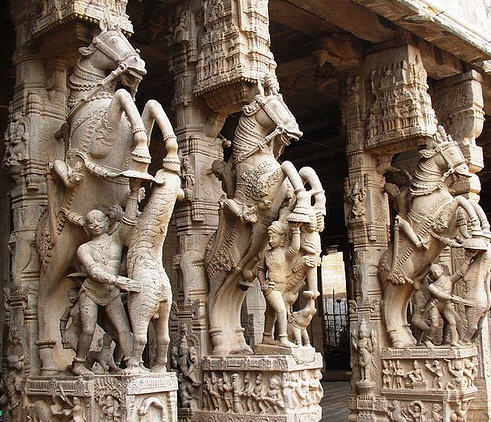
The Shehsaraya Mandapa (Horsecourt Hall) is on the east side of the temple. It has 8 intricately carved monolithic pillars of men on rearing horses.
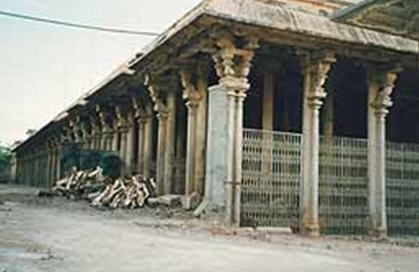
On the same side of the temple (northeast side) is the impressive "Hall of a Thousand Pillars." Each of the 5.5m (18 ft) granite pillars is intricately carved. This hall actually has only 953 pillars. In the center of the hall is a pedestal shaped like a processional car. During Vaikuntha Ekadasi, the processional deity is brought to this pedestal before going on procession.
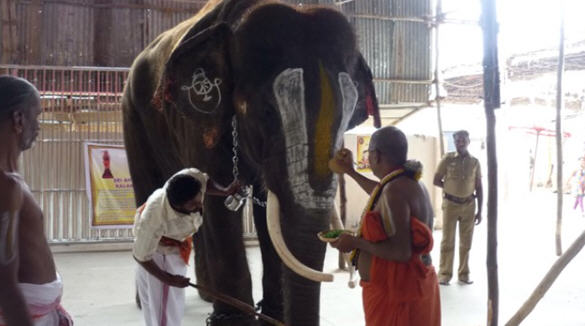
Each morning at 6.45 am, a cow with her head facing away from Lord Ranganatha and an elephant facing the cow are brought before the altar. Thus when the deity's doors are opened the first thing that Lord Ranganatha sees is the rear end of a cow and the head of an elephant, which are both considered very auspicious. I was told that instead of a conch-shell being blown, the elephant blows his trunk. This is the most auspicious time to see Lord Ranganatha. The puja (worship) of the temple is done according to the regulations of the Ramanuja-sampradaya.
Before you enter the fifth enclosure (some say fourth enclosure) you have to remove your shoes. The Rangavilas Mandapa hall is directly in front of the southern gate. Next to this (to your left as you enter the southern gate) is the small, intricately carved Venugopala Temple. Inside the porch of the Venugopala Temple there are paintings which show Krishna having pastimes with the gopis (cowherd-girls).
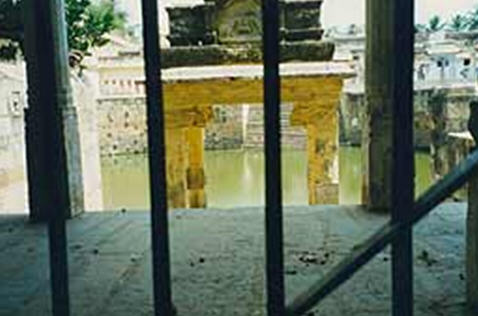
In the northeast corner of this enclosure is the Chandra Pushkarani tank, the moon-pond, where Vibhishana first placed the deity of Sri Ranganatha when he brought the deity here. Next to this tank are shrines dedicated to Lord Rama, Krishna, and Vishnu lying on the serpent Ananta Sesa. Toward the southeast corner of this enclosure is a storage area for the sacred vehicles (vahanas) of the Deities, which are used for processions.
There is also a temple dedicated to Lord Narasimha. You then exit out the north gate and reach the goddess Sri Ranga Nachiyar Lakshmi Temple, on your left, in the northeast area of the temple. Lakshmi is the consort of Ranganatha.
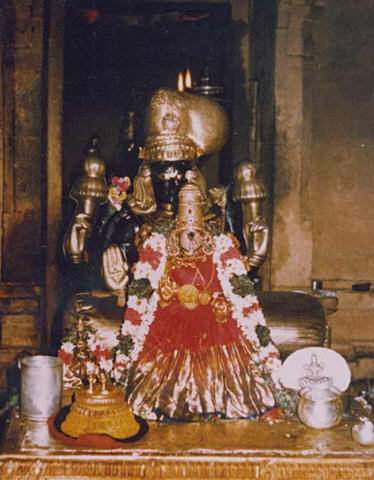
Ramanuja's samadhi
Sri Ramanujacarya made the Srirangam Temple his headquarters. His samadhi (tomb) is within the premises of the Srirangam Temple The deity seen is the actual body of Sri Ramanuja at Udayavar/Yadhirajar/Ramanujar shrine inside Sri Ranganathaswamy Temple, Srirangam.. His mortal remains anointed with preservative herbs.
When it was time for Sri Ramanuja to leave this World , he informed his disciples about it. Disciples requested Acharya to live with them for some more days. Ramaunuja told he will live with them for three more days. Disciples were not satisfied , so Yathiraj told to get a deity made , then after duly sanctifying the statue he transferred all his power into it. Then With his head on the lap of Embar and his feet on the lap of Vaduga Nambi, Ramanuja breathed his last in 1137 AD listening to the recitation of the Divya Prabhandam and looking at the Sri Padukas of Yamunacharya.
His physical body is preserved even today in a sitting posture in the Sannidhi (Sanctum Sanctorum).Yearly twice the body is applied Pachai Karpuram (Camphor) and Kumkum (Vermillon).

Lord Caitanya’s Visit to Sri Rangam
Lord Krishna appeared five hundred years ago in West Bengal as Sri Caitanya Mahaprabhu, who accepted the mood of a devotee of Krsna. After taking sannyasa, the renounced order of life, Lord Caitanya traveled throughout India for six years, visiting holy places and spreading the chanting of the holy names of the Lord. During that period, the longest time He spent in one place was at Sri Rangam.
Lord Caitanya observed the practice that a sannyasi ceases travel during the four months of the rainy season. So one year He spent those four months in Sri Rangam, at the home of a Sri Vaisnava brahmana named Vyenkata Bhatta. Because Vyenkata Bhatta was a devotee with whom Lord Caitanya could discuss the transcendental pastimes of Lord Krsna, Lord Caitanya passed His days at Sri Rangam in great happiness
. 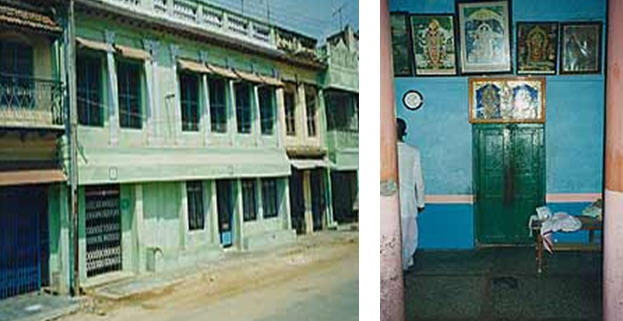
Lord Caitanya would bathe daily in the sacred Kaveri River and visit the temple to see Sri Ranganatha Swami. Many hundreds of thousands of people from various parts of India came to Sri Rangam to see the beauty of Caitanya Mahaprabhu and His ecstatic love for Lord Krsna. Every day, local Vaisnava brahmanas would invite Caitanya Mahaprabhu to their homes for lunch.
Vyenkata Bhatta and Caitanya Mahaprabhu developed a friendly relationship, and they would happily laugh and joke together. Since Vyenkata Bhatta belonged to the Sri Sampradaya and worshiped the Supreme Lord in His majestic aspect as Laksmi-Narayana, Caitanya Mahaprabhu would have lengthy spiritual discussions with him about worshiping Laksmi-Narayana and worshiping the Lord in His most sweet form as Radha-Krsna. Lord Caitanya (all the while in a pleasant mood) cited a scriptural reference that tells how Laksmi, the consort of Narayana, wanted to join the most confidential pastimes of Krsna but was not allowed to do so.
Unable to defeat Lord Caitanya’s arguments, Vyenkata Bhatta said, “You are the Supreme Personality of Godhead Krsna Himself. You know the purpose of Your activities, and the person whom You enlighten can also understand Your pastimes.” Caitanya Mahaprabhu enlightened Vyenkata Bhatta in all the subtle details of Lord Krsna's most intimate pastimes.
Lord Caitanya then said, “There is no difference between the transcendental forms of the Lord. Different forms are manifested due to different attachments of different devotees. Actually the Lord is one, but He appears in different forms just to satisfy His devotees.”
When the four-month period ended, Sri Caitanya Mahaprabhu took permission from Vyenkata Bhatta to continue on with His travels. When Caitanya Mahaprabhu bade farewell, Vyenkata Bhatta fell down unconscious in the ecstasy of spiritual love. Pilgrims to Sri Rangam can still visit the house of Vyenkata Bhatta.
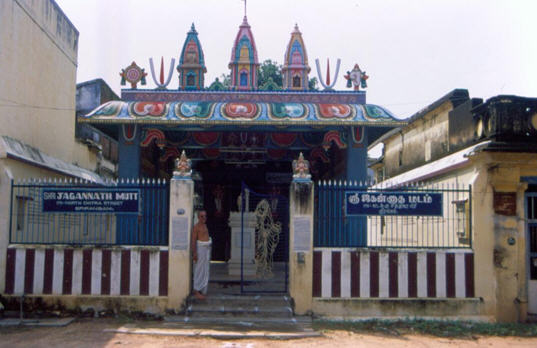
During his stay Lord Chaitanya carved with his own hands deities of Jagannath , Baladev and Subhadra and worshipped them. This deities are worshipped even today in a small temple called Jagannath Math across the road from Vyenkat bhatts house.
